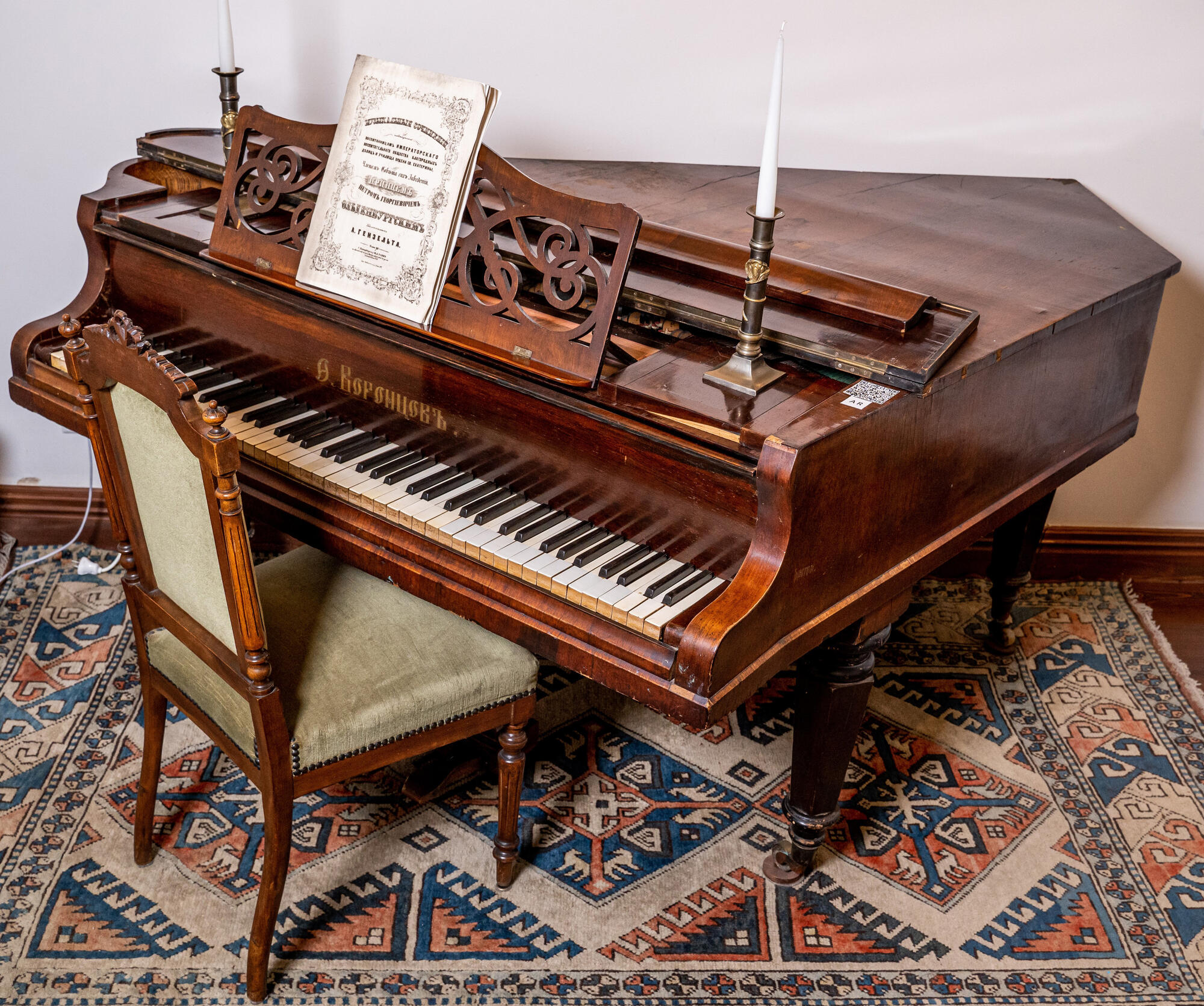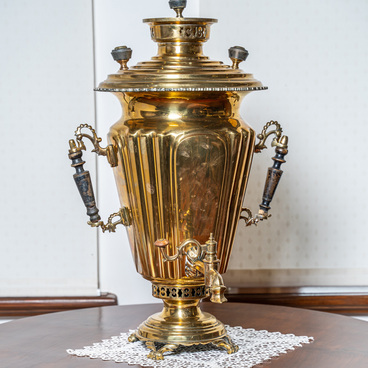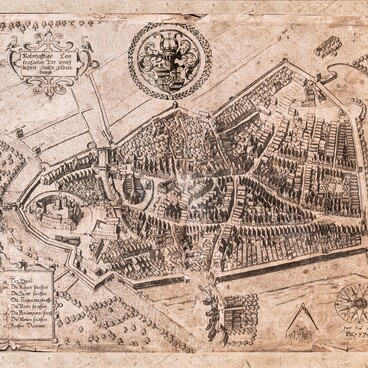A small piano is a baby grand piano. The body of the instrument has a characteristic wing-like shape. The front cover is installed on special hinges, there is a keyhole in the center of the front part. There is a music stand under the front cover, the outer outline of which resembles a stylized outline of a book, the inner surface is decorated with floral ornaments, and a stylized image of a heart is located at the center.
The small piano is made of coniferous tree, piano keys have ivory overlays. The space under the music stand is decorated with a cloth that was, apparently, red (now a shade of dirty pink). The wooden edges of the frame, where the music stand can be removed, have special grooves to change the angle of the music stand. The carved wooden pedal plate is a stylized image of a lyre. The pedal feet and rollers of lyre post are made of yellow metal.
According to the former owners of the instrument, it belonged to the Oldenburg family, was located in the Olgino estate in Ramon and was acquired by their ancestors - the Shereshkov-Shcheglov family - from Prince Peter Alexandrovich of Oldenburg in 1917, before his departure from revolutionary Russia.
Everyone in the Imperial family played musical instruments. Music education was a mandatory part of the education of children in imperial families. Well-known musicians were invited as teachers. Vincenzo Manfredini was Pavel’s teacher, Dmitry Bortnyanskiy as well as Friedrich Christian Diez (a student of Christoph Willibald von Gluck) taught Alexander I.
Thanks to teachers and systematic studies, Russian emperors mastered the skills of playing musical instruments, based on the preferences of each of them. According to the research by Igor Zimin, Alexander I played violin and clarinet. Nicholas I and Alexander III chose instruments related to military music: Nicholas - flute, French horn, cornet, cornet-a-piston, Alexander - French horn, trumpet, baritone trumpet; Alexander II and Nicholas ΙΙ played the piano, and Nicholas’s son, Cesarevich Alexey ‘played the balalaika splendidly’. The women of the Romanov family preferred pianoforte.



